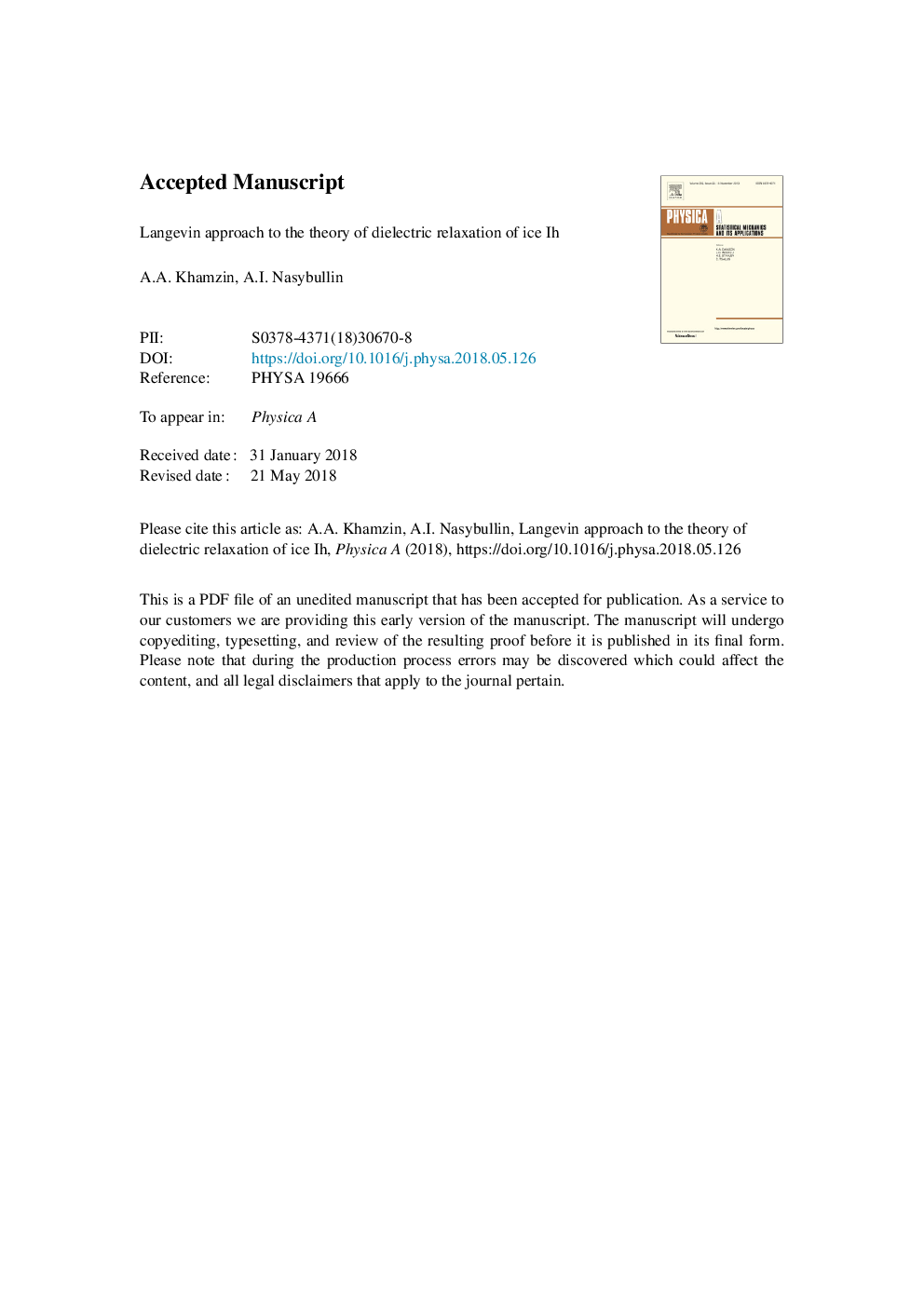| Article ID | Journal | Published Year | Pages | File Type |
|---|---|---|---|---|
| 7374792 | Physica A: Statistical Mechanics and its Applications | 2018 | 20 Pages |
Abstract
Within the Langevin approach a new phenomenological model of dielectric relaxation of the ice is developed. This model is based on the concepts of defect migration, which is the main mechanism for dielectric relaxation of the ice. The new model allows to describe the relaxation behavior of the ice over a wide temperature range and to explain its characteristic features: changes in the slope of relaxation time at high and low temperatures (“crossovers”), and the non-monotonic temperature dependence of the broadening of dielectric loss peak parameter. The “crossover” of relaxation time at high temperatures is due to the transition from the predominant motion of the orientational defects of Bjerrum to the preferential motion of ionic defects with decreasing temperature and the weak correlation between them. On the contrary, at low temperatures a strongly correlated motion of ionic and orientational defects arises, which causes the observed low-temperature “crossover”.
Keywords
Related Topics
Physical Sciences and Engineering
Mathematics
Mathematical Physics
Authors
A.A. Khamzin, A.I. Nasybullin,
